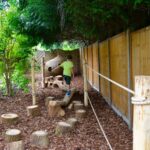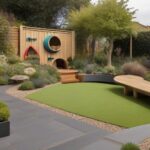Gardening can be a fun and educational activity for kids of all ages. Designing a garden specifically for children can make the experience even more enjoyable and engaging. When creating a garden for kids, it’s important to consider their interests, abilities, and attention spans.
One way to design a garden for kids is to include plants that are interactive and sensory-rich. This can include plants that have interesting textures, colors, and scents. For example, you could plant a variety of herbs such as mint or lavender, which children can touch and smell.
Another important aspect of designing a garden for kids is to create spaces for them to play and explore. This can involve incorporating paths, hideaways, and secret spaces within the garden. Children love to have places to hide and play pretend, so creating designated areas for these activities can enhance their experience in the garden.
Including elements such as butterfly gardens or bird feeders can also help to attract wildlife to the garden, providing kids with the opportunity to observe and interact with nature. Planting flowers that attract pollinators like bees and butterflies can help teach kids about the importance of these creatures in the ecosystem.
Involving children in the design and maintenance of the garden can also help to increase their interest and investment in the project. Encourage kids to help plant, water, and care for the garden, giving them a sense of ownership and responsibility. This can also be a great learning opportunity, teaching kids about the life cycle of plants and the importance of caring for the environment.
Lastly, consider adding elements of whimsy and fun to the garden design. This can include things like brightly colored planters, whimsical decorations, or even a small playhouse or fort. By creating a garden that is visually engaging and playful, you can help foster a love of gardening and nature in children from a young age.













